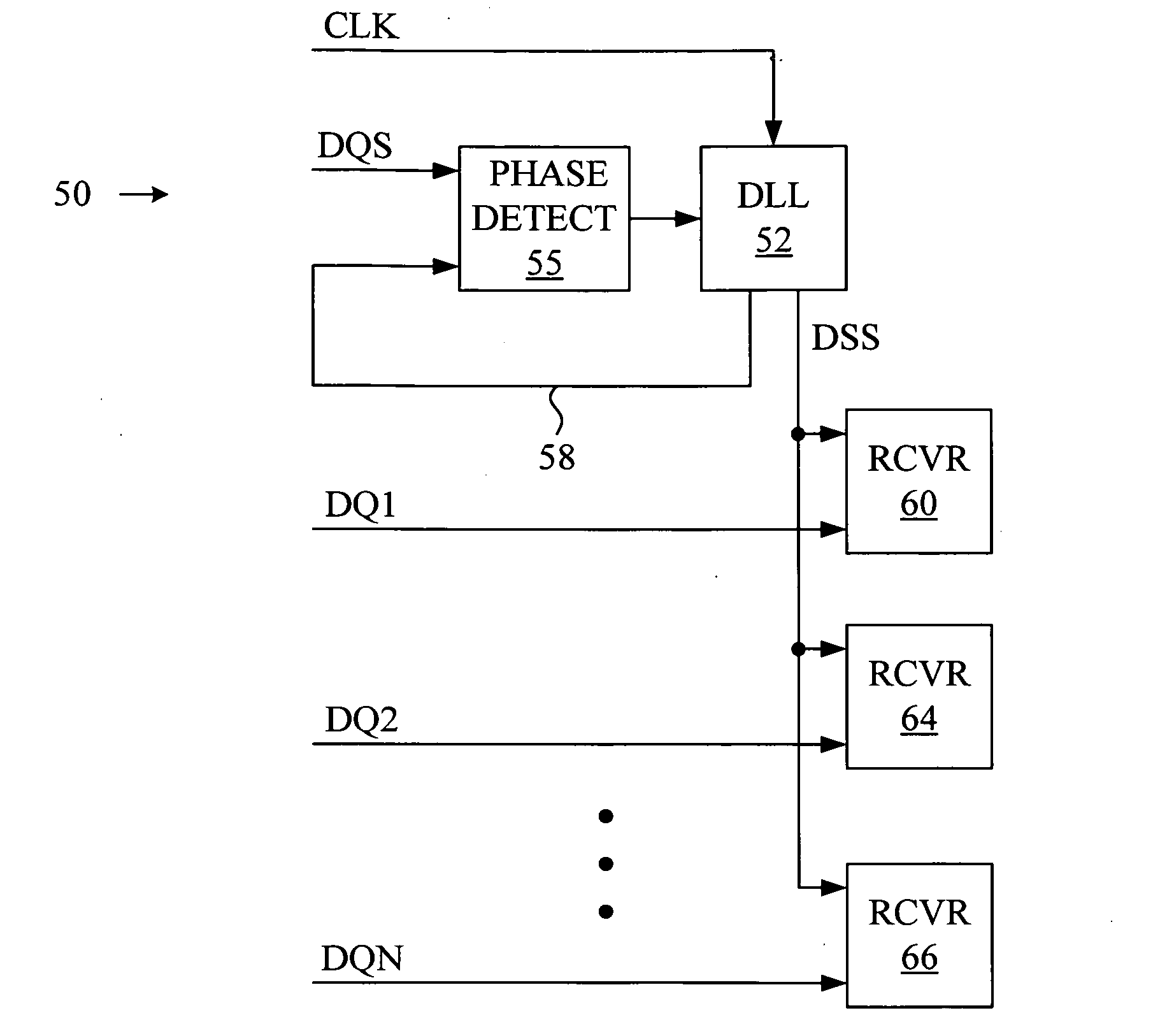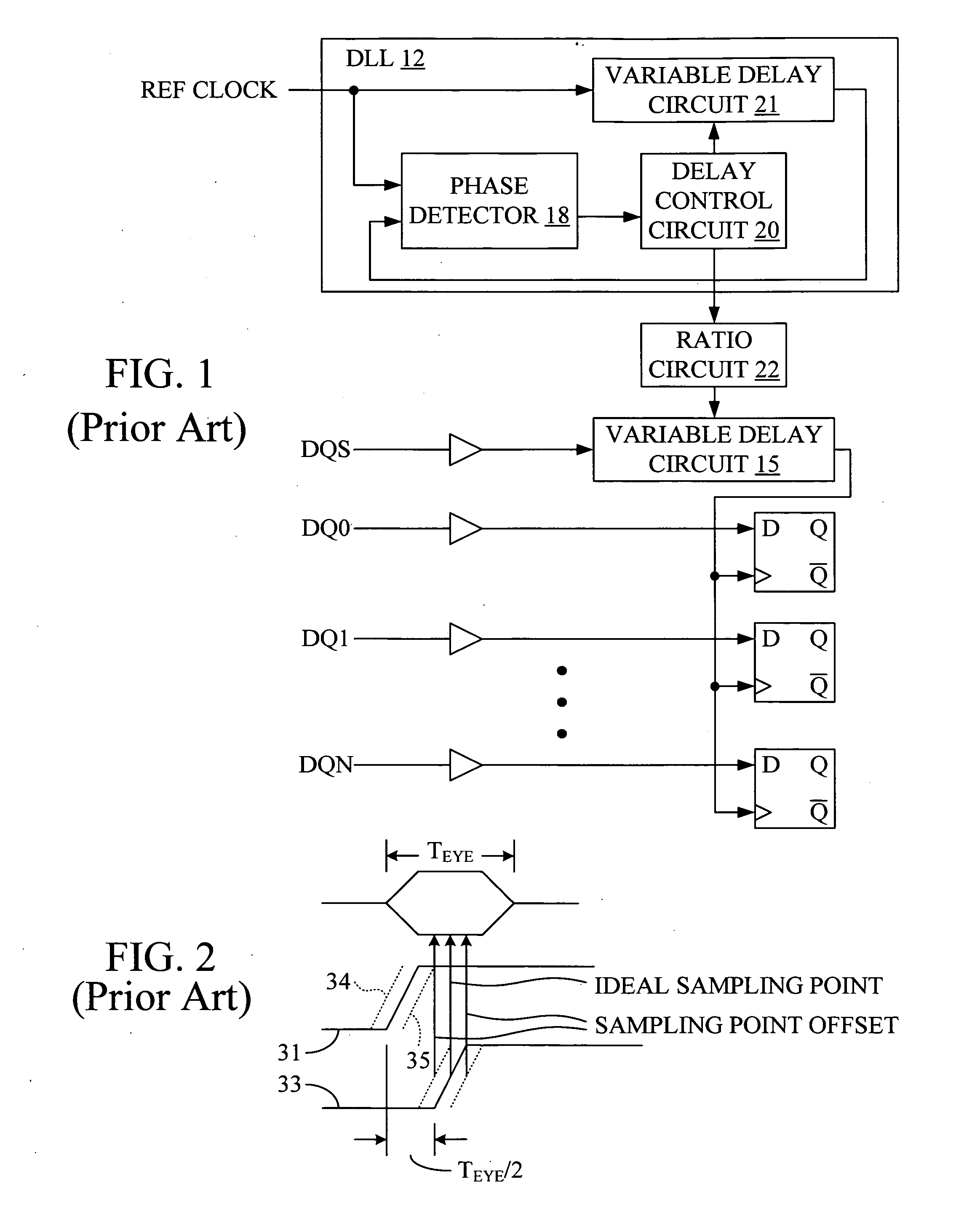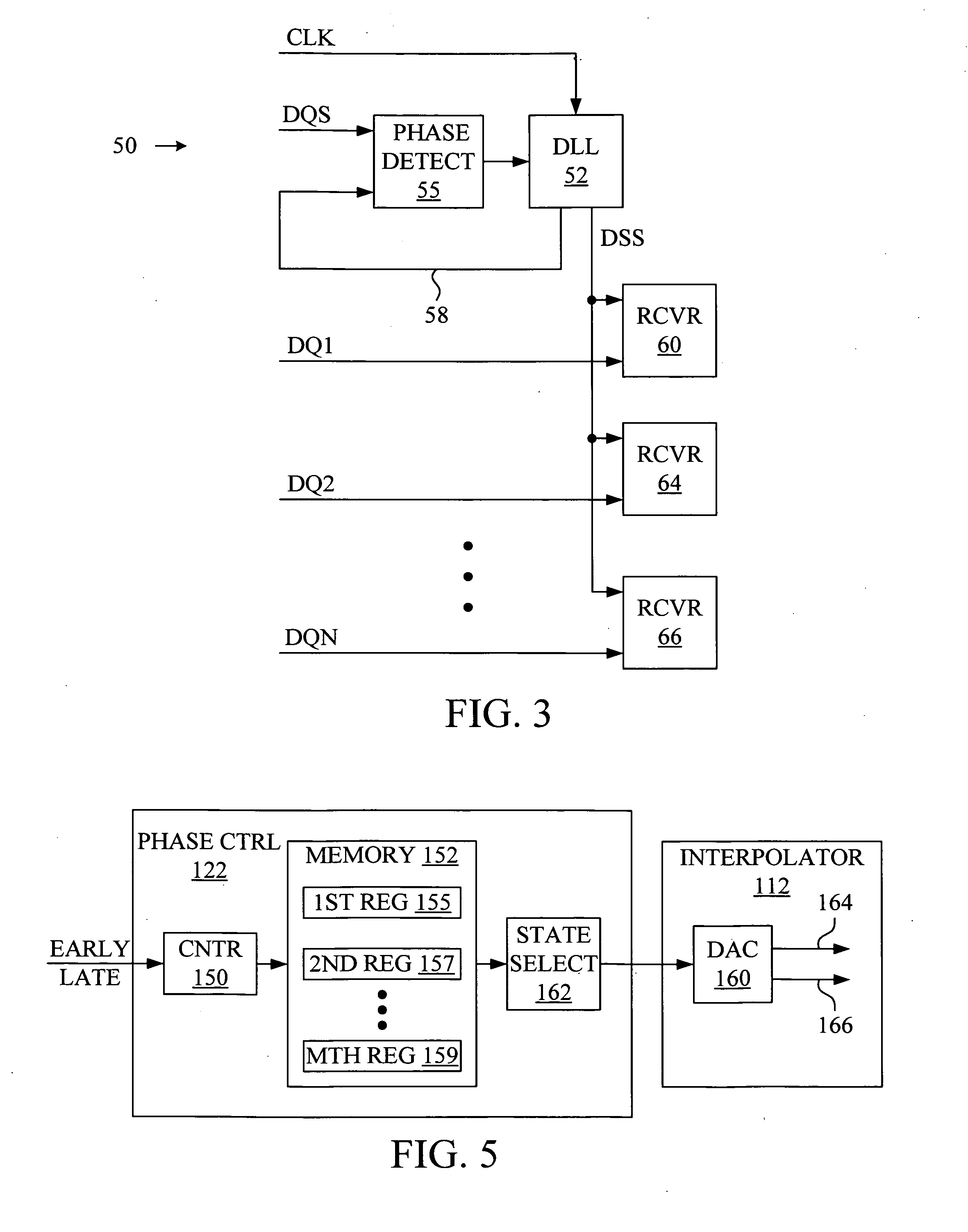Apparatus for data recovery in a synchronous chip-to-chip system
a chip-to-chip system and data recovery technology, applied in the field of signal communication, can solve the problems of significant compensation, loss of timing margin, and dependence on timing errors, and achieve the effect of reducing the sampling errors of data communicated and improving the waveform
- Summary
- Abstract
- Description
- Claims
- Application Information
AI Technical Summary
Benefits of technology
Problems solved by technology
Method used
Image
Examples
Embodiment Construction
[0017]FIG. 3 shows a diagram of a data-sampling apparatus 50 that creates a data-sampling signal on data-sampling line DSS for sampling data signals received on data lines DQ1-DQN with receivers 60, 64 and 66. The data-sampling signal is output by a DLL 52 that adjusts the phase of a clock signal on clock line CLK in accordance with phase information acquired from a strobe signal received on strobe line DQS. The phase information is acquired by comparing, at a phase detector 55, the strobe signal received on strobe line DQS with the signal output by DLL 52 on phase-lock line 58. Thus, unlike the direct strobing of the prior art, in which the strobe signal is used for sampling data signals, in accordance with the present invention the strobe signal is used to adjust the phase of a data-sampling signal, and the data-sampling signal is instead employed to sample data signals.
[0018]As discussed below, embodiments of the present invention may be used with timing reference signals other t...
PUM
 Login to View More
Login to View More Abstract
Description
Claims
Application Information
 Login to View More
Login to View More - R&D
- Intellectual Property
- Life Sciences
- Materials
- Tech Scout
- Unparalleled Data Quality
- Higher Quality Content
- 60% Fewer Hallucinations
Browse by: Latest US Patents, China's latest patents, Technical Efficacy Thesaurus, Application Domain, Technology Topic, Popular Technical Reports.
© 2025 PatSnap. All rights reserved.Legal|Privacy policy|Modern Slavery Act Transparency Statement|Sitemap|About US| Contact US: help@patsnap.com



